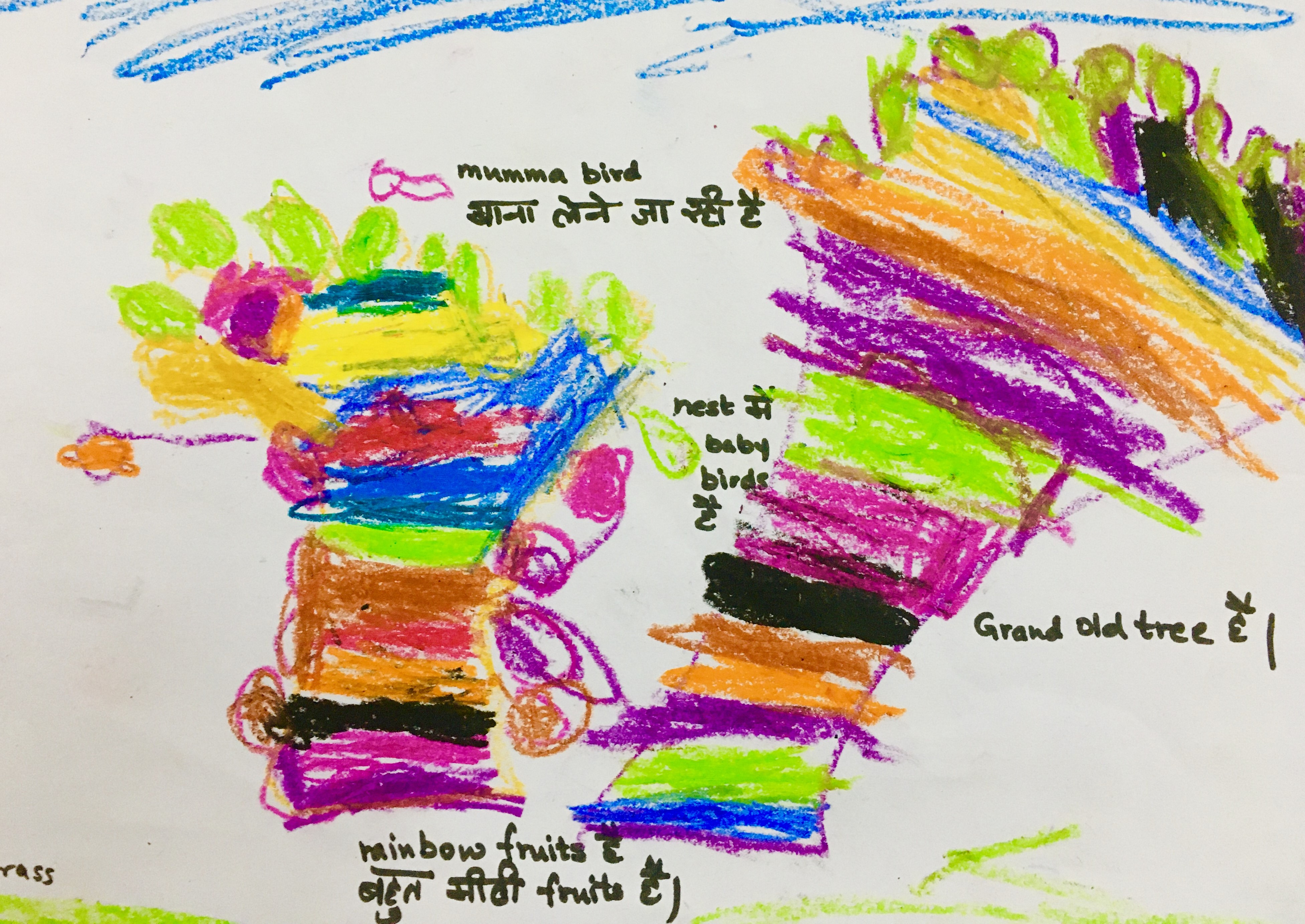Animals of Rainbow Land, by Mudita Didi
Sep 21, 2023

A children’s story and its enactment
Do 5 year olds really need lessons in inclusion?
In an increasingly polarised world, I was surprised when my Kindergartners wove a story along the lines of ‘accepting differences’ and ‘inclusion’ to enact for their annual ‘Hamara Manch’ presentation.
It all started with the theme ‘What if’ that was facilitated with them, in the month of September. This theme triggered their imaginations and how! They imagined altering their realities by inviting penguins to their school’s birthday, having flying dolphins accompany them to the park, transforming themselves into clouds that showered rain on flowers.
Each child had a unique ‘What if’ that he/she imagined. Their thoughts didn’t just end up in thin air. They looked at ways to turn them into reality too. “We can bring ice for the penguins. Then they can stay there and be happy”, was their reality-blurring-solution for the invitation extended to penguins. The children stayed in this stratosphere for the remainder of the school year, sharing glimpses of their vivid imaginations from time to time.
The piece de resistance came when they began creating a story collectively for their presentation at the annual day, ‘Hamara Manch’. The story began by one child saying, “There was a land full of colours. Everything in this land was colourful. There were lots and lots of colours. All trees, flowers, animals all were colourful”. The next child took this thought forward and added a twist to the tale right away. “And in this land, one day, there came a man who did not like colours. He was black and white and he liked only black and white. He did not like colours”.
The conflict was right there for all to address, and they did so by adding their thoughts, one-by-one, to help progress the story.
The children could not fathom another being being averse to colours. They loved colours and wanted the man to share their joy in them too. They wanted him to take back colours to his land and make it colourful too. While some children were persuasive, bordering on leaving the man no choice in the matter by plotting to colour him up sneakily, there were others who spoke about the feelings that colours evoked in them. There was also one particular child who ensured that the others fell in line and did not do anything unfair and harmful to the new being in their midst. Their story was free-flowing. As facilitators we had to give direction to the end of the story, as the children were unable to do so themselves.
We suggested that the children look at ways in which the man could take in some colour from the surroundings and colour one small body part of himself at a time. The children then came up with a mushroom lending its blue colour, banana lending yellow and a leaf lending orange colour to the new entrant in their land. In this way the man discovers that a little colour is not so bad and the animals are also introduced to the possibilities that black and white can add to their colour palettes.
Once the story idea was scripted by us facilitators, the children took on roles to enact different animals of this colourful jungle which they had named ‘Rainbow Land’. The character of the man finally got changed into that of a lion, adding another dimension of a likely conversation, lion-to-lion, between the new lion and the one already living in the colourful land. The story was scripted in a way that each group of animals dialogued with the black and white lion and shared their connect with colours.
The black and white lion goes back a friend of the animals of ‘Rainbow Land’. All of them together sing, extolling the joys of colours. The children created a simple song for this purpose.
Though presented in the online space, the children stayed in character and moved according to the animal they had chosen to enact. It was a delight to see the hippo practise rolling on the mat, “I saw hippos do this when they are in the water”. And the tigers attempting to speak in their tiger-like voice, “I like green. It makes me happy”. The children chose the colours of their animal bodies too. So we had rabbits that were red, tigers that were blue with green stripes and also purple with pink stripes etc.
The essence of the story was well gathered and appreciated by the audience. As we facilitators patted our backs at a well-received enactment, we could easily recognise that the real hero was the story. And that it was the children, the original storytellers, who deserved the loudest applause.
Oh, for the depths of maturity that little 5 year olds are capable of! With such thought-provoking ideas originating from these young minds, the future of the world is in sane hands for sure!